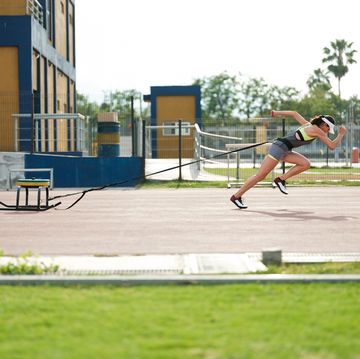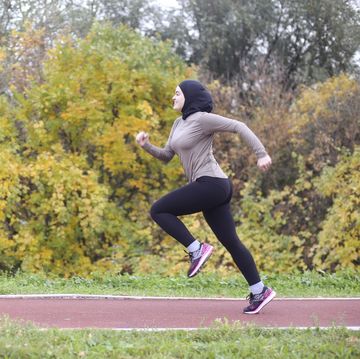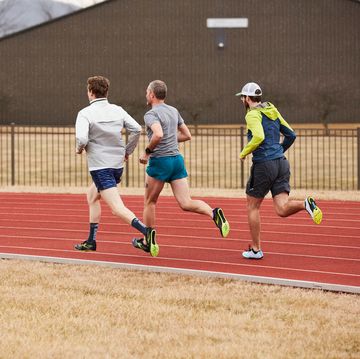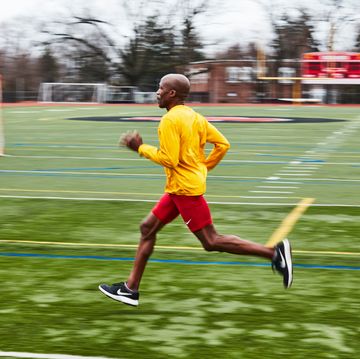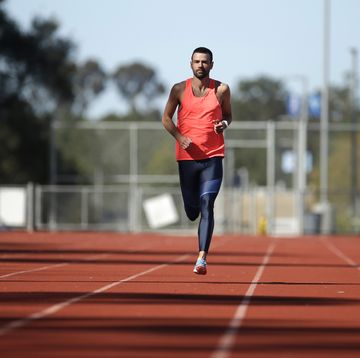The way most runners train these days owes a lot to the ideas of pioneers like Arthur Lydiard, who coached Peter Snell and other New Zealand world-beaters in the 1960s. Lydiard was a strong proponent of periodization: first you do your base training, building your mileage and focusing on endurance; then you do strength training, focusing on hills; then you do speedwork; then you’re ready to race.
As with those of any good prophet, Lydiard’s teachings are the subject of endless debate about exactly what he said, what he meant, how literally we’re supposed take what he said, and so on.
One topic that’s often debated is whether you should do any faster running, like interval workouts, during your base training period. Does running intervals have an opportunity cost, since you’re missing the opportunity to do another long run? Or, worse, is there something about hard anaerobic running that actually prevents you from building the endurance you’re supposed to?
That last idea—speedwork hurts endurance—always struck me as unlikely. I’ve generally included intervals during my base training periods, albeit relatively long and relaxed ones with short recoveries, which isn't necessarily inconsistent with Lydiard's approach. Still, a recent, seemingly unrelated study reminded me of the debate.
The study, published in Shoes & Gear by a team of researchers in Sweden, Canada, and several other European countries, actually hit the headlines for a different reason. The Daily Mail’Different Types of Runs Every Runner Should Know headline was “High intensity training ‘does more HARM than good, raising the risk of cancer and heart disease,’ experts warn.” Other news sources were more circumspect, but the main message, even in the press release, We earn a commission for products purchased through some links in this article.
So what did the study actually show? The researchers put 12 untrained volunteers through seven hard workouts in 15 days. On each workout day, they did four to six 30-second all-out sprints with four minutes of rest (the classic HIT protocol) with arm-cycling, and the same with leg-cycling. They took arm and leg muscle biopsies before and after the training period to explore what was happening within the muscles in response to this training.
The headline result was that, after training, the mitochondria—the “powerhouses” that use oxygen to generate cellular energy for muscle contraction—were only working about half as efficiently as they were at the start of the study, thanks to inactivation of an enzyme called aconitase. That, indeed, seems like bad news.
The legs and arms responded quite differently, though. The amount of mitochondria in the legs increased dramatically, compensating for the loss of mitochondrial efficiency. In the arms, on the other hand, the amount of mitochondria didn’t increase, leaving the arms with compromised mitochondrial function.
From a health perspective, this suggests the arms weren’t able to cope with the high load of reactive oxygen species produced by the interval workouts, leaving them more vulnerable to oxidative damage (this is where the inflated claims about cancer and heart disease come in). A moderate dose of reactive oxygen species is crucial to triggering training-induced fitness gains, but too much can overwhelm your ability to adapt.
Why should the arms and legs be different, when both were doing identical workouts? It may be, the researchers suggest, that even untrained people are more used to doing exercise (i.e., walking around, supporting body weight) with their legs. The legs, in other words, correspond to someone who’s in decent shape; the arms correspond to someone who’s out of shape. The message: Beware of high-intensity intervals unless you’ve already gotten into reasonable shape with lower intensity exercise.
This is a reasonable message, and not one I necessarily disagree with. But it’s worth noticing that there are an awful lot of suppositions and extrapolations there. Do legs and arms really correspond to fit and unfit people? Moreover, the actual exercise performance and VO2peak measurements increased in both legs and arms—so despite the cellular markers that may or may not indicate something “wrong,” the training did work to make people fitter.
Now, having pointed out these potentially flawed extrapolations, let me make one of my own. Is it possible that these sorts of mechanisms are also at work in distance runners who hammer all-out anaerobic intervals early in their base training, before they’re fully fit? Could overdosing on intervals prematurely overwhelm your body’s ability to tolerate oxidative stress and reduce the efficiency of your mitochondria—whose improvement is, after all, the prime focus of base building?
To all these questions, I’m afraid my answer is “I don’t know.” I don’t take training advice from muscle-biopsy studies (particularly two-week studies in sedentary volunteers), but I do think the results can be thought-provoking. At the very least, next time I get dragged into one of those “Gospel According to Lydiard” debates, I’ll take a little more seriously the idea that hard intervals at the wrong time might have downsides beyond fatigue and opportunity cost.
***
Discuss this post on the Sweat Science Facebook page or on Twitter, get the latest posts via e-mail digest, Interval Workouts for All Distances Nutrition - Weight Loss!




